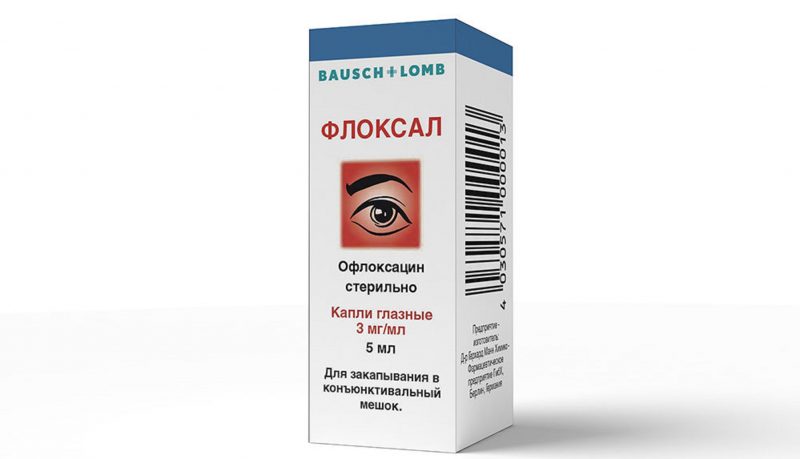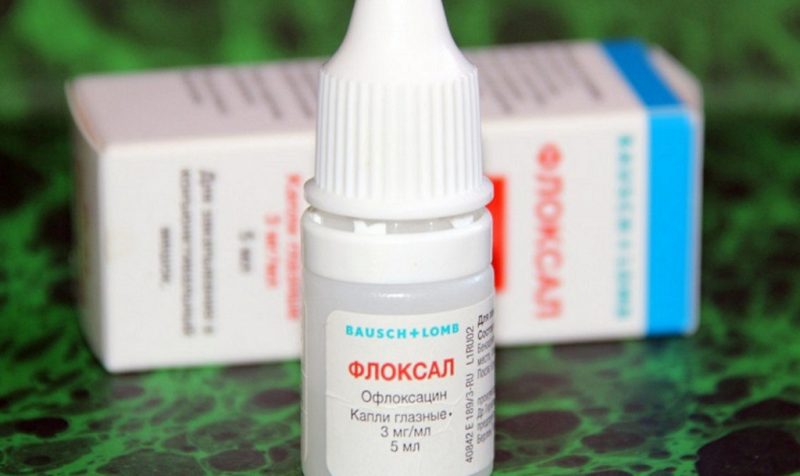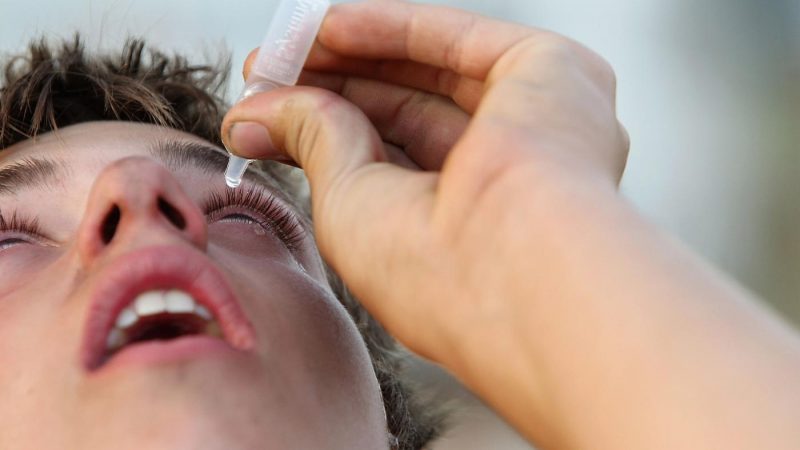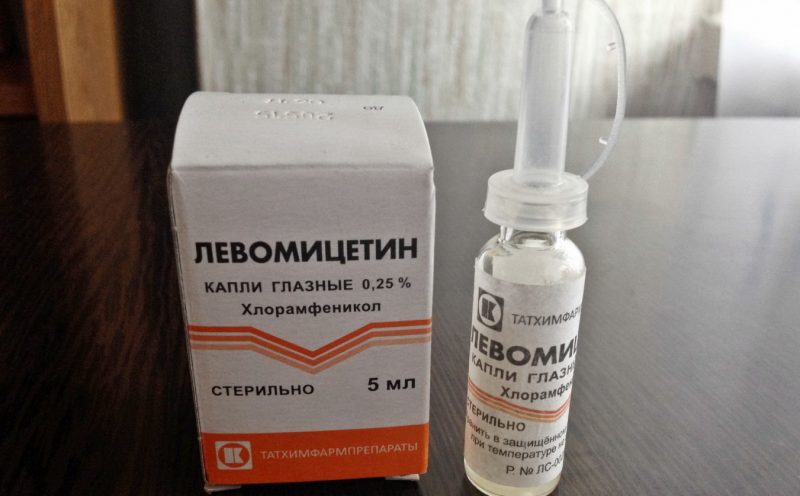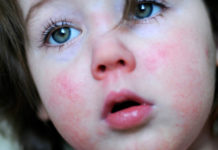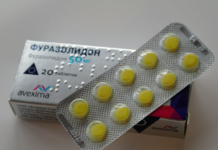Eye drops "Floksal" - a tool used to combat bacteria that accidentally hit the mucous membranes. The medication acts carefully, without affecting the systemic circulation, therefore it is considered one of the safest. This allows pediatricians to use drops to treat children. It is only important to consider the possible limitations and strictly follow the recommended dosages.
Material Content:
The composition of the drug
Drops are a clear solution. Its main active ingredient is ofloxacin, which exhibits antimicrobial activity. Additionally, excipients that support the desired form and ensure its safety throughout the shelf life are also introduced into the composition of the drug.
This list includes:
- sodium chloride;
- sodium hydroxide;
- benzalkonium chloride;
- hydrochloric acid.
The basis of the product is sterile water.
On a note. “Phloxal” is not only drops. The drug is also released in the form of an ointment, which is placed under the lower eyelid, if the positive effect of instillation of the solution is weak.
Pharmacological action, pharmacodynamics and pharmacokinetics
In fact, drops are an antibiotic that quickly inhibits the growth in the number of pathogenic bacteria that form a colony on the mucous membrane of the eye. During therapy, the patient eliminates all pronounced signs of inflammation provoked by microbes.
Ofloxacin is susceptible to many strains of bacterial organisms.
With its help, you can eliminate a colony of such species as:
- Bacillus spp;
- Staphylococcus aureus;
- Acinetobacter lwoffi;
- Serratia marcescens;
- Escherichia coli;
- Klebsiella pneumoniae;
- Haemophilus influenzae;
- Moraxella catarrhalis;
- Klebsiella oxytoca;
- Proteus mirabilis;
- Enterobacter cloacae.
A positive effect is achieved due to the ability ofloxacin to suppress the reproduction of bacterial cells. This compound blocks a special enzyme, DNA gyrase, as a result of which the process of building a new DNA that carries all the genetic information about the bacterium will be disrupted.
The drug works at the local level, accumulating in the tissues, namely in the vitreous. Some of it penetrates the blood, but after 3 - 5 hours it is completely removed from the vascular bed.
Why prescribe Phloxal eye drops for children
Children are more likely than adults to suffer from inflammation of the mucous membranes of the eyes. Bacteria freely fall under the eyelid if the child simply rubs his face with his hands. For this reason, pediatricians are advised to always have antibacterial drops in a home medicine cabinet.
In the annotation to the medication, the following indications for use are indicated:
- conjunctivitis - a bacterial variant of mucosal damage;
- keratitis - a pathology affecting the cornea;
- barley - inflammation of the hair sacs, accompanied by the separation of pus;
- blepharitis - damage to the entire ciliary edge;
- dacryocystitis - inflammation in the lacrimal sac;
- chlamydial damage to the organs of vision;
- corneal ulcer - inflammation that develops into a destructive process.
In all these cases, you can safely use "Phloxal." Moreover, the earlier treatment is started, the higher its effectiveness will be.
Instructions for use and dosage
The use of drops should not cause difficulties. It is only important to consider the age of the child. Schoolchildren can instill medicine on their own, while small patients cannot cope without the help of their parents.
Manipulation can only be done with clean hands, so as not to aggravate the situation, provoking the introduction of a new infection. It is necessary to carefully move the lower eyelid and introduce the liquid medicine into the conjunctival sac. After this, you need to ask the baby to close his eyes briefly. This will minimize possible discomfort.
The dosage of Phloxal eye drops is always the same for children of different ages. One drop is enough 3-4 times a day.
The duration of treatment may vary. The maximum period is 2 weeks, but usually it is possible to cope with inflammation in 4 to 5 days.
Drug interaction
The tool works at the local level, so its interaction with other drugs has not been studied. Doctors say that it is not necessary to additionally apply other drops with a similar effect. If the Phloxal solution does not bring the expected effect or the treatment is too slow, it is supplemented with the eponymous ointment, which is placed with a thin strip under the lower eyelid 1 or 2 times a day.
Contraindications, side effects and overdose
"Phloxal" is often prescribed for children to combat inflammation of bacterial origin, since this medication is both effective and safe. As such, there are no contraindications to its use, except in situations where the patient suffers from hypersensitivity to any components of the drug. In this case, the pediatrician will select an analogue harmless to the child.
There are no age restrictions on taking the drug.
It is prescribed even for newborn babies if they are diagnosed with conjunctivitis, which is easy to suspect for restless behavior, attempts to scratch the eyes, redness of the mucous membranes, the appearance of pus and edema on the eyelids.
Side effects from the use of the medication are rare. This is usually a temporary visual impairment. The image in front of the eyes becomes cloudy and vague, but the situation independently normalizes after 3 to 4 minutes, so there is no reason for panic.
Other side effects include reactions of the child's body from the side of the organs of vision.
The list includes:
- swelling of the eyelids;
- redness;
- itching and burning;
- profuse lacrimation;
- dry eyes
- mucosal irritation;
- a sensation of the presence of a foreign object or sand.
Other undesirable consequences of using the product are possible, including:
- headache;
- swelling of the throat mucosa;
- dizziness;
- nausea;
- swelling of the face.
All of these symptoms are reversible and disappear after the course of treatment. If side effects are too pronounced and closely resemble an allergic reaction, then the remedy should be abandoned early and ask the pediatrician to pick up other drops or ointment for inflammation.
There were no cases of overdose in medical practice, however, if too much medicine was accidentally used at one time, it is worth rinsing the child’s eye with clean water.
Analogs of eye drops
For inflammation of the mucous membranes of the eyes, other means with a similar mechanism of action can be used. In pharmacies, there are analogues of “Phloxal” of different price levels that effectively cope with pathogenic bacteria.
- Chloramphenicol. Such drops are inexpensive, but help quickly. With their help, you can get rid of conjunctivitis in 2 to 3 days, and from barley in 4 to 5. The chemical compound chloramphenicol, which inhibits the activity of bacteria, is introduced into the composition of the drug. It is allowed to use drops in childhood, but do not forget about the restrictions. "Levomycetin" is prohibited for newborns up to 1 month.
- Vigamox. These are eye drops, which include the substance moxifloxacin, which works by analogy with ofloxacin. It acts at the cellular level and prevents the active reproduction of bacteria. The tool is allowed for children from one year.
- "Chloramphenicol." These are eye drops or ointment, which includes the eponymous synthetic antibiotic. Both options work by analogy with Levomycetinum. Drops are allowed for children from 1 month, and ointment - from a year.
- Tetracycline ointment. This tool to relieve inflammation from the cornea and mucous membranes of the eyes is considered one of the most effective. This is a sterile ointment with tetracycline in the composition, which is placed in the conjunctival sac. The drug is always prescribed by the pediatrician, but is sold without a prescription. An ointment is prescribed even for newborns in case of emergency.
- Tobrex. A modern tool to combat inflammation in the mucous membranes of the eyes. It consists of tobramycin and auxiliary components. The medication has no age restrictions, but can not be used in the presence of hypersensitivity.
Many drugs containing antibiotic components are sold only if there is a prescription for them, but even over-the-counter products should not be used without the permission of the pediatrician. Only a doctor can correctly calculate the dose or determine the duration of the course of therapy.


